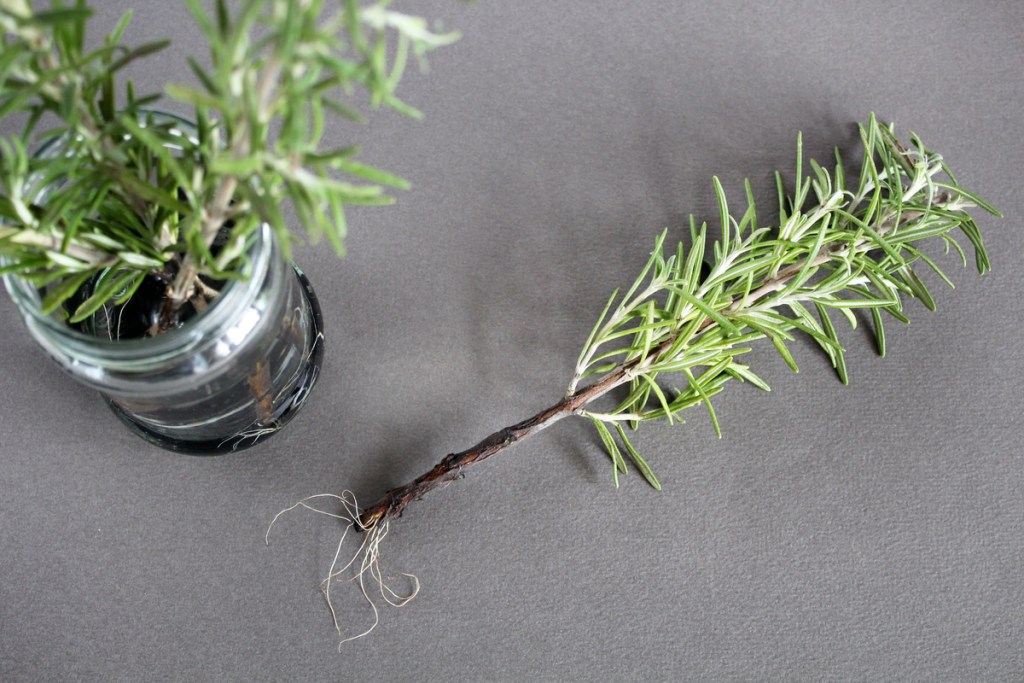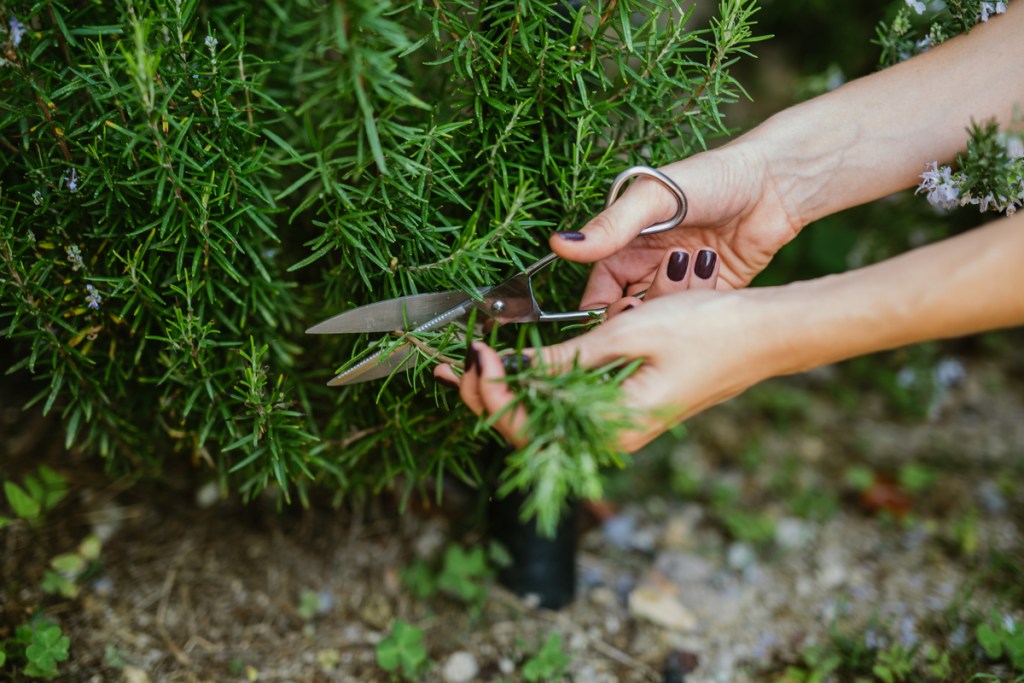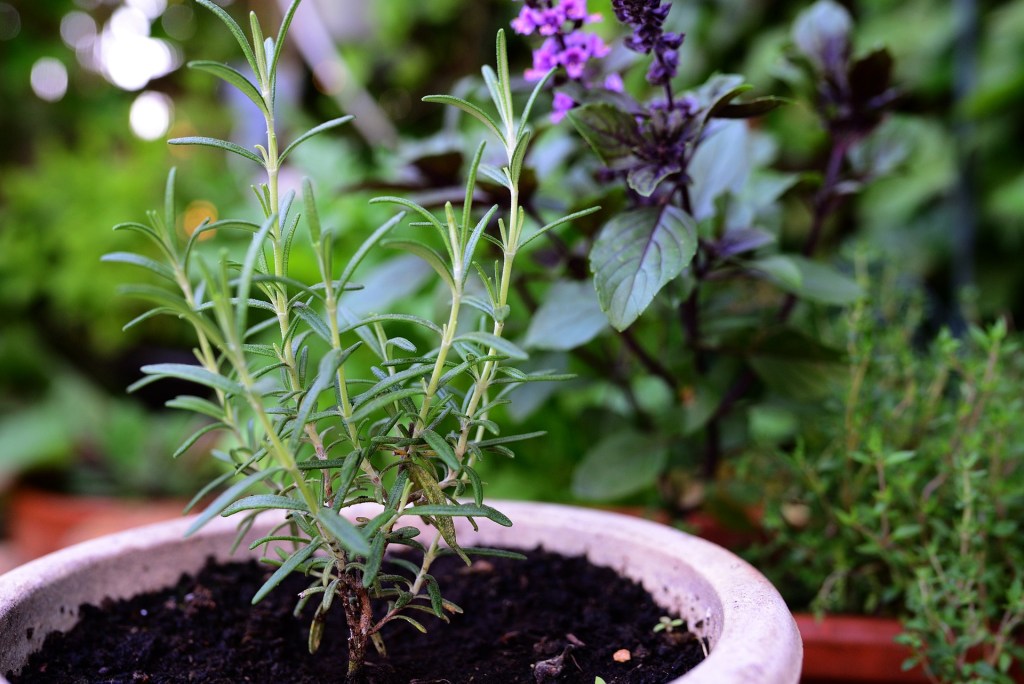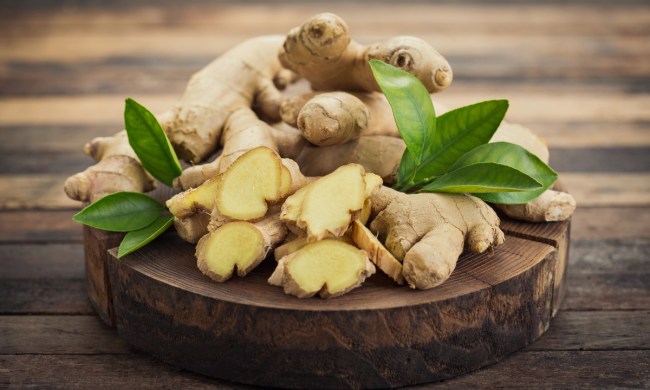Rosemary, also known as Rosmarinus officinalis, is a savory herb with a welcoming fragrance. When grown in ideal conditions, it can be bountiful. It compliments meats such as chicken, beef, and lamb and adds a lively touch to stews and soups. It was first discovered and cultivated in the Mediterranean and has been used for many traditional practices across Greek, Roman, and Egyptian cultures.
If you’re one of the many people who wish to grow rosemary, there are several things you should be aware of before you start to plant. Depending on where you live, your rosemary can be placed in a container herb garden or planted as a beautiful shrub in your outdoor garden.

Rosemary: A perfect plant for the holidays
Not only is rosemary a versatile herb, it’s also a pleasant way to amp up the holiday cheer this season. You can be creative and opt for a rosemary tree instead of the traditional evergreen or pine tree. Not only are rosemary trees practically pest and disease resistant, but they also smell just as beautiful as standard Christmas trees and can be used for many purposes, such as cooking, tea, and seasonings. With a rosemary tree, you won’t have to worry about carrying it to the trash after the holidays or cleaning up endless pine needles.
Should I plant rosemary from seeds or as baby plants?
Some people find joy in growing their gardens from seeds. Other folks enjoy catering to baby plants and both options are fine. However, rosemary can be difficult to germinate. Rosemary can take several weeks or even months to sprout from a seed, which may leave newer green thumbs frustrated. Depending on what zone you live in, this could cause some real frustration. In this case, you should consider buying a baby plant from a local nursery, so you already have a head start.

If you choose to start with seeds, you should start in the winter. Aim to start your rosemary seeds up to 12 weeks before your last frost to achieve optimal results. When potting your rosemary seeds, remember that they thrive better in sandy and rocky soil as opposed to your traditional potting mix. Sandy cactus soil is also a preferable option. After you’ve selected your sandy mix, only add about three seeds per potting cell and make sure you’re not burying the seeds. You want them to rest on top of the soil, so they’re visible to the naked eye.
What’s the ideal climate for rosemary?
Rosemary is a perennial plant. While it can survive in droughts, it needs a lot of sunlight. Ideally, 6 to 8 hours of direct sunlight works best. When temperatures start to plummet to 45 degrees Fahrenheit and colder, it’s best to bring them inside. If you live in zones 7 through 10, though, you’re lucky: Those zones have the luxury of keeping their rosemary outside all year-round.
For those of you new to gardening, you might want to invest in Rise Gardens. It’s an indoor hydroponic smart garden with WiFi and mobile app capabilities that will help you stay on a schedule as well as allow your seeds to reach their full potential.

How big can rosemary get?
If you’re in zones 7 through 10, your rosemary can grow up to six feet tall. Of course, if it’s potted, it won’t grow that large. It should be noted that even though rosemary is a perennial, it should be treated with the care of an annual, which means you should be cautious about how much you water it. Rosemary tends to prefer drier yet humid conditions so if you plan on doing some indoor gardening, terracotta pots would work best.
How to harvest rosemary
Now that your rosemary is growing, you’ll want to know how to tell when your rosemary is ready to be harvested. [what are some of these signs?]
To harvest, start by selecting the longer rosemary branches. You want to encourage growth and don’t want to harvest from branches that are still growing. It’s also important to remember to not cut a lot of rosemary at once; cut only what you need at the time. For best results, try to harvest and prune a couple of weeks before the last frost in your zone.
Now you’ve received some tips on growing and harvesting rosemary both indoors and outdoors. Indoors, you’ll always have fresh herbs within reach. If you plant a rosemary tree outdoors this holiday season, you’ll transform your holiday dinner. Be creative and have fun with this versatile plant.


